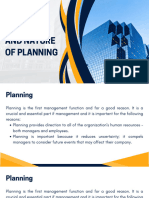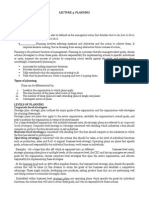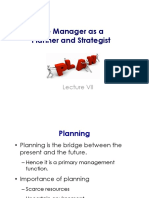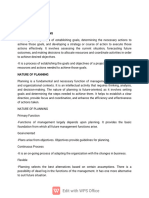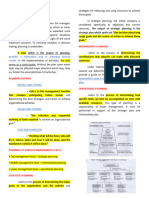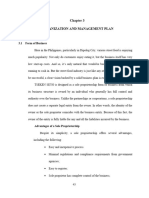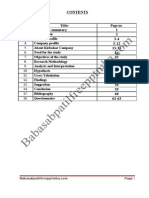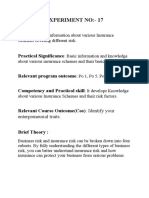0% found this document useful (0 votes)
33 views15 pagesPlanning 4
Planning involves deciding how to achieve goals and creating strategies. Types of planning include operational, strategic, long-term, and short-term plans. Kinds of plans are objectives, strategies, policies, procedures, rules, programs, and budgets. Planning occurs at different levels like top-level strategic planning, middle-level tactical planning, and frontline operational planning.
Uploaded by
jeannythethirdCopyright
© © All Rights Reserved
We take content rights seriously. If you suspect this is your content, claim it here.
Available Formats
Download as PDF, TXT or read online on Scribd
0% found this document useful (0 votes)
33 views15 pagesPlanning 4
Planning involves deciding how to achieve goals and creating strategies. Types of planning include operational, strategic, long-term, and short-term plans. Kinds of plans are objectives, strategies, policies, procedures, rules, programs, and budgets. Planning occurs at different levels like top-level strategic planning, middle-level tactical planning, and frontline operational planning.
Uploaded by
jeannythethirdCopyright
© © All Rights Reserved
We take content rights seriously. If you suspect this is your content, claim it here.
Available Formats
Download as PDF, TXT or read online on Scribd
/ 15

